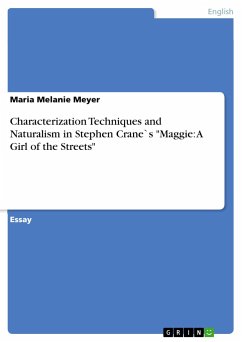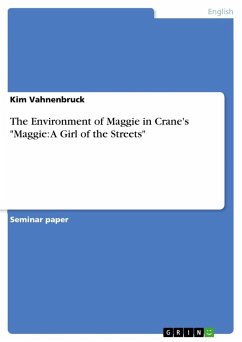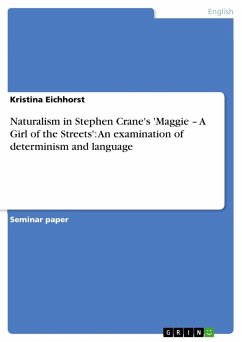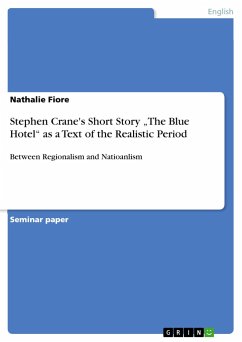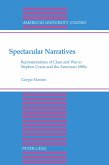Seminar paper from the year 2002 in the subject American Studies - Literature, grade: 2,0, University of Hannover (Englisches Seminar), course: Progressivism, Modernity, and the 'New Woman' - US-Literature and Culture, 1880-1910", language: English, abstract: Stephen Crane's first novel, Maggie - A Girl of the Streets (1893), is a characteristicspecimen of Naturalist or New Realist Literature. The plot is quite different from VictorianRealist literature as well as the Symbolist literature by the likes of Kipling and T.S. Eliott. Infact, Crane purposely wanted to get away from that sort of writing as he states in one of hisletters: "If I had kept to my clever Rudyard -Kipling style, the road might have been shorterbut, ah, it wouldn't be the true road." While the early Realists still concentrated on peoplefrom the middle class upward, Crane's characters belonged to the lowest scale in terms ofsocial standing. This meant that the young author had to break with some taboos installedbyVictorian writers and as a result from that, he had difficulties in publishing the novel in thefirst place and also received a lot of hostility from critics.The most basic feature that distinguishes Maggie: A Girl of the Streets from Symbolist orAestheticist works is its focus on the concept of 'truth'. For Symbolist authors, the highestprinciple of art was 'beauty' whereas Naturalists saw the need of objective descriptions of lifeand nature in order to portray them as close to reality as possible. Helga Quadflieg sees this asa replacement for the divine, which both Symbolists and Naturalists did not believe in:"Im Gegensatz zum Ästhetizismus stellt der New Realism aber nicht'beauty' an die Stelle früherer Gottheiten, sondern 'truth', die [...] denhöchsten Stellenwert hat." While Symbolist literature in some cases still contained supernatural apparitions, e.g. inKipling's The Mystery of Purun Bhagath or The Bull that Thought and Hardy's ForConscience's Sake, Naturalist authors excluded this completely from their works.Surprisingly, though, the main character in Maggie, in drowning herself as a result fromunlucky love, seems to be a counterpart to the figures like the sirens from Greek mythologyBrentano's Lore Lay, de la Motte Fouqué's Undine and Shakespeare's Ophelia who make upa group one may call 'water women'. Such 'water women' were common literary figuresespecially in Romantic poetry and may be considered to have their roots in Homer's Odyssey.This certainly does not fit into Naturalist literary theory but I will try to show how StephenCrane interweaves this theme into the novel without neglecting the Naturalist basis of it.


